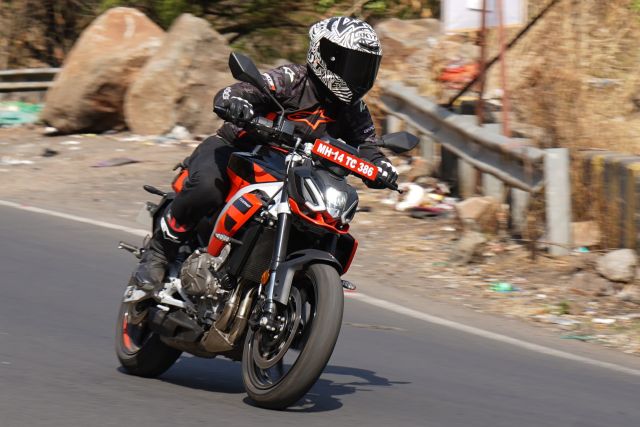
The Aprilia Tuono 457 promises to be a more comfortable version of the faired RS 457, which should bring the RS’ ballistic performance to a more usable form factor. Excited? So were we.
The story of the Aprilia Tuono 457 stems from its faired sibling, the RS 457, which is going to be a frequent mention in this road test because of just how similar the two bikes are. They share almost all the components, the primary differentiating factor being how you ride them and what sort of use-case each bike caters to.
The RS 457 took the country by storm when it was launched and for good reason. It was a proper charismatic twin-cylinder sport bike with a price tag that made it reasonably attainable for a large number of people. Yes, you were paying more than you would for some alternative bikes, but the bike also gave you more in return. While the committed and hardcore nature of the RS 457 appealed to many, it wasn’t for everyone.
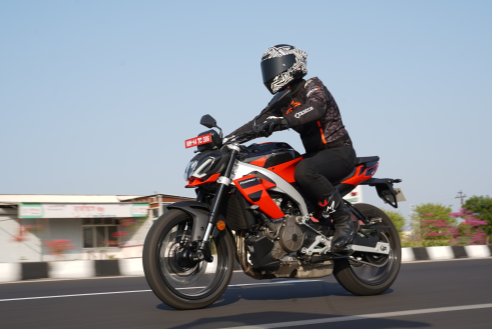
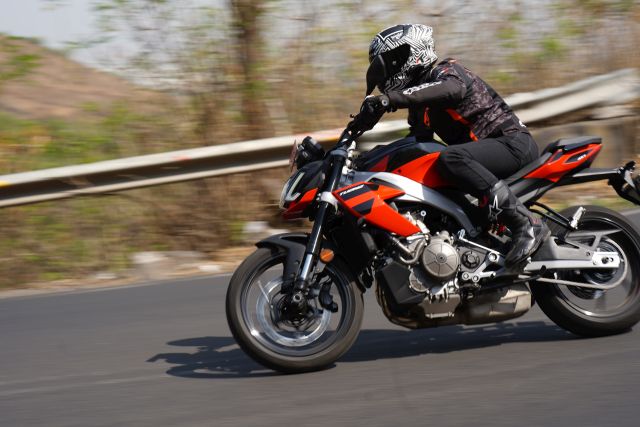
Internationally, the bikes in Aprilia’s “RS” line-up always have a naked counterpart, the “Tuonos”. The arrival of the Tuono 457 is important because, in theory, it brings the fantastic performance of the RS 457 to a naked motorcycle, which is an easier format to live with.
A lot of the RS 457’s visual appeal lies in its design, which is derived straight from the bigger Aprilia RS bikes. In my books, the Tuono 457 starts off on the back foot here. It doesn’t have the other Tuonos’ signature headlight-integrated half fairing and, instead, has a very complicated headlight design which I’m certainly not a fan of. The flared-out side shrouds and the headlight are also distinctly separate units here. The tank shape is different, too, but, apart from these few differentiating factors and the absence of a full side fairing, the rest of the bike is very RS 457-ish; it looks proportionate and sporty.
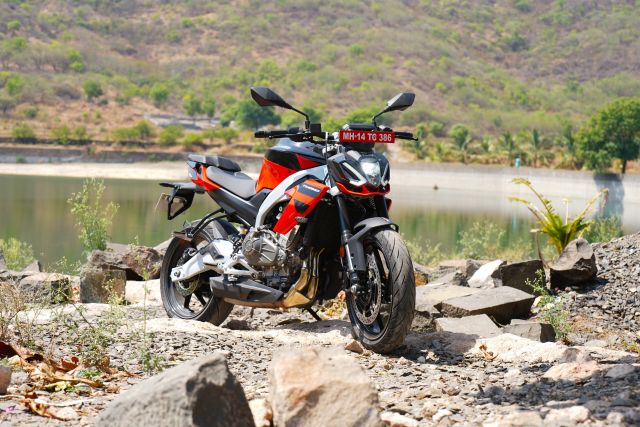
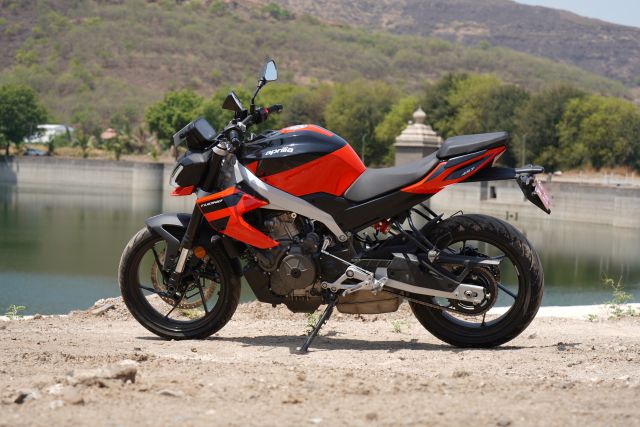
Sitting on the bike immediately makes its intent clear; the handlebar is a single-piece unit positioned higher up than the RS 457’s low clip-ons. The posture isn’t fully upright and I did still have to lean forwards a little, but this is a riding position that will appeal to more people. The 457-cc twin-cylinder engine sounds wonderful on start-up and it continues to produce a blissful exhaust note as the revs climb. Riding the bike also makes you realise just how compact it feels. The foot-peg position is similar to that of the RS and the seat height is also identical.
Thanks to a shorter final-drive ratio compared to the RS 457’s, the Tuono accelerates quicker and can be an absolute hooligan as it thunders through the gears. This motorcycle gives you access to a crazy amount of performance and will facilitate an excellent learning curve for those upgrading from a smaller bike, trying to systematically become faster, safer, and more skilful riders.
If you loved the precise and flickable handling of the RS 457, you’ll definitely be happy throwing the Tuono 457 around the bends as well. Its suspension, wheels, tyres, and steering geometry are the same as the RS’ and the Tuono’s lively nature will have you planning Sunday rides on routes where there are lots of corners. In other words, the Tuono 457 is a step towards more serious performance bikes and will allow you to hone your skills on the racetrack as well.
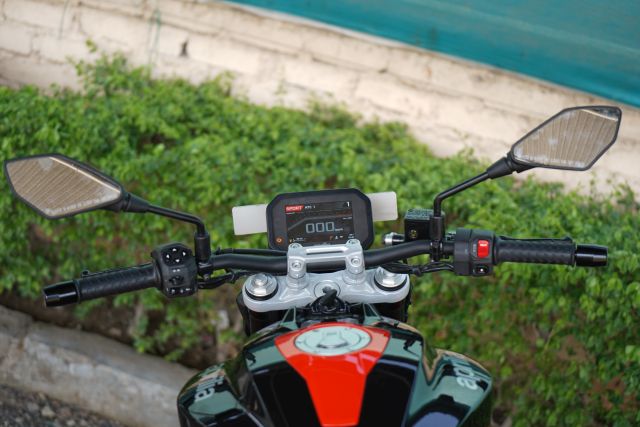
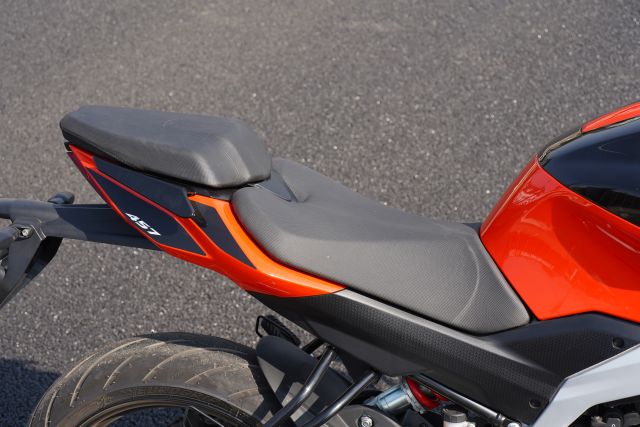
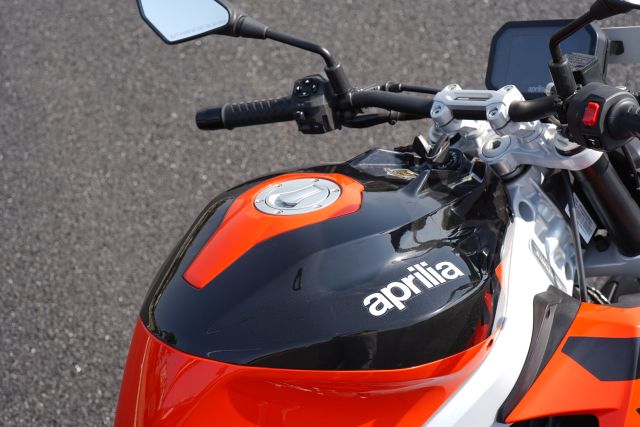
The more upright ergonomics come with a benefit and a downside. The Tuono 457 will be a little easier on the back compared to the RS 457, but the RS’ more leaned-over posture paired with its large visor means you’ll have significantly better wind protection. Owing to this, neither of these bikes is ideal for long-distance riding and the identically stiff suspension set-up on both further underscores this point.
The Tuono 457 is loaded with electronics. There are three riding modes, each of which is linked to a power delivery and traction control preset. Rain mode has relatively smooth power delivery and the traction control is set to the maximum available setting, that is, level three, whereas the power feels more progressive in eco and the traction control is wound back a notch to level two. Sport has the traction control set to minimum intervention, level one, and the throttle response is properly punch-in-the-gut fast. The acceleration in sport mode is so violent that I found myself using it only when the streets were empty or on relatively deserted inter-city roads. It makes the bike come alive and was a lot of fun. Eco felt the best to use on a day-to-day basis, although even in this mode, the bike does still jump forwards on small throttle inputs owing to its quick throttle. This is something you’ll have to get used to, especially while riding in the city.
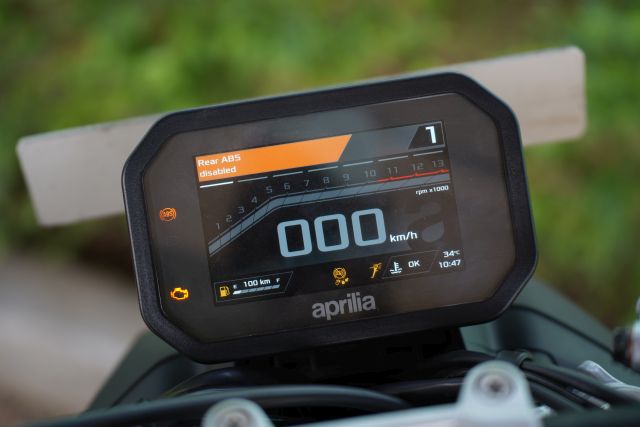
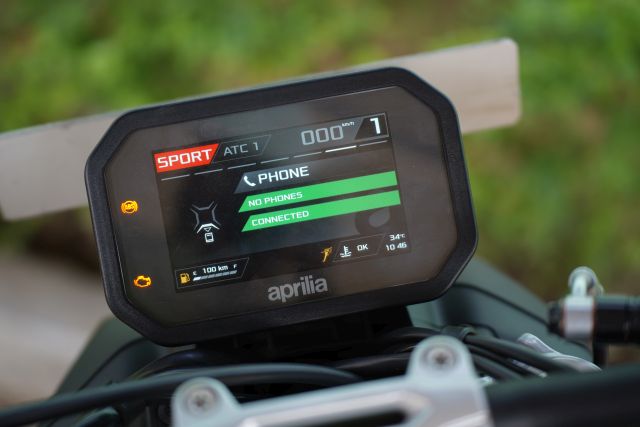
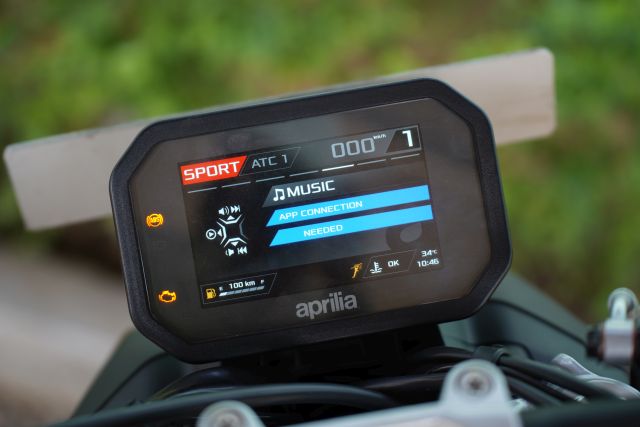
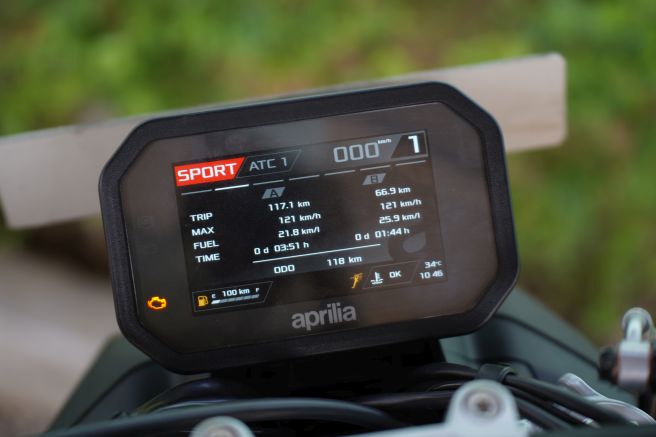
Additionally, the Tuono 457 lets you turn off rear ABS as well as set the traction control to any of the three levels or disengage it altogether, regardless of which riding mode you are in.
The Aprilia RS 457 is a serious sport bike and if you want a gentler version of that, the Tuono 457 is not that motorcycle. Yes, the way you sit and ride the bike is significantly more relaxed thanks to the wider, higher-set, single piece handlebar, but the rest of the bike is just as hardcore as its faired sibling. It is a super-fun, firm-riding, and sharp motorcycle which should be seen strictly as a more comfortable alternative to the RS and not as a less serious or gentler option.
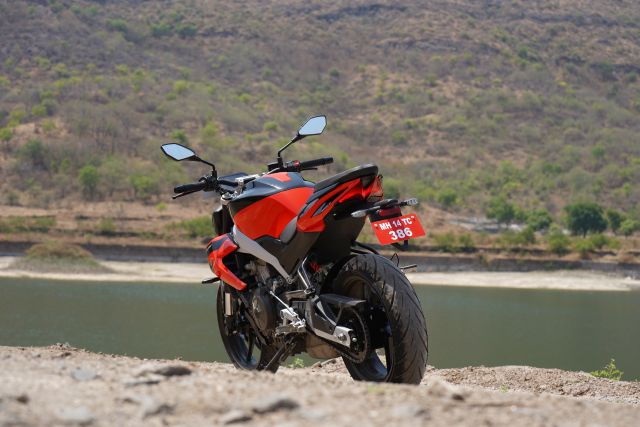
The Tuono 457 is priced at Rs 3.95 lakh (ex-showroom), which makes it Rs 25,000 more accessible than the RS 457, Rs 1 lakh dearer than the KTM 390 Duke, and Rs 45,000 more than the Yamaha MT-03.
The Aprilia 457 platform is growing in the right direction and is producing very capable motorcycles. The RS 457 and Tuono 457 are both incredible machines and have left us excited about what the potential Tuareg 457 would be like.
Also read: KTM 390 Enduro R Review


Leave a Reply